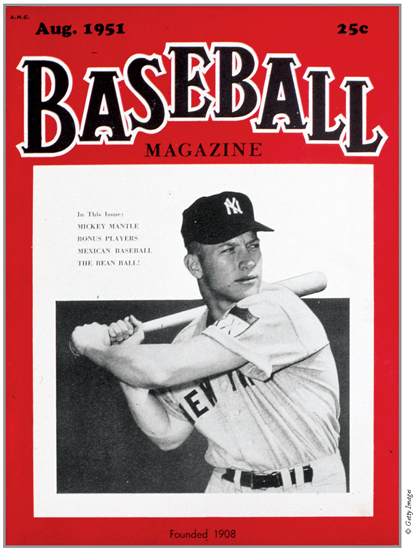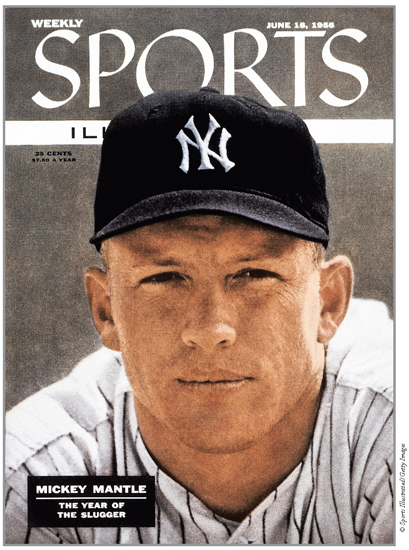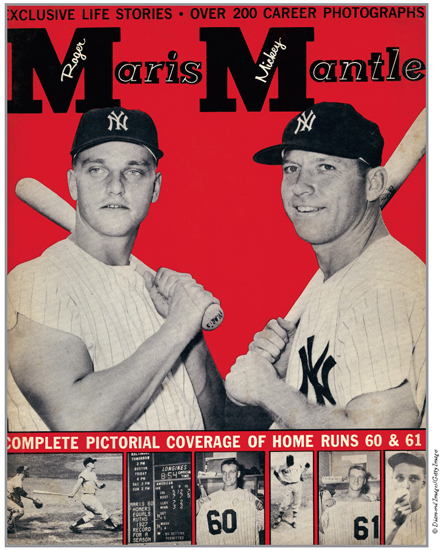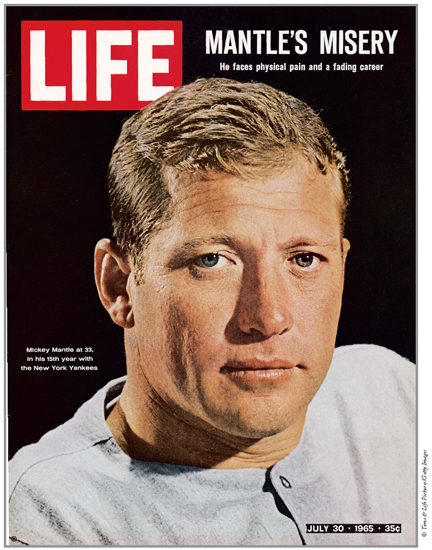The Last Boy (60 page)
Authors: Jane Leavy

But when my literary aspirations foundered on the shoals of hero worship, my non–baseball loving friend Carole Horn insisted: “You have to see this play. This is your book.”
So I went.
In the course of his research, Wright discovered that his hero/heroine wasn’t what he/she seemed. In fact, she was a collaborator. Disillusioned and disabused of his faith in the icon of gay culture, he found he could no longer write the play he had envisioned. In fact, he couldn’t write at all.
The iceberg of writer’s block wouldn’t dissolve until six years later, when a friend said, “Whatever you do, don’t write a play about history. Write a play about your love affair with Charlotte von Mahlsdorf.”
“For the first time, the play’s structure dawned on me,” Wright said in his preface. “It wouldn’t be a straightforward biographical drama; it would chart my own relationship with my heroine. I would even appear as a character, a kind of detective searching for Charlotte’s true self.”
When the curtain fell, I knew what to do and whom to thank for it. Carole had given me permission to write about my guy my way, my love affair with my hero, Mickey Mantle. I would even use myself as a minor character, a kind of every-fan detective, negotiating the swells of adulation while searching for Mickey’s true self.
Mistress of the arts of healing and semantics, Carole also kept my head on straight and the moving parts moving, bandaging psychic wounds and ministering to sentence structure throughout the long march.
Leo Tolstoy wrote
War and Peace
in five years. This took longer. I’m not proud of that. “Well,” Mantle’s cousin Max said kindly, “Mick was kind of like war and peace.”
This campaign was a slog for my family and friends. During the most difficult time in my life, I was supported by a cadre of stalwarts without whom I couldn’t have put one foot in front of another, much less one sentence after another. First among the cohort: my children, Nick and Emma. Nick never lost interest and is the only person, finally, from whom I could tolerate the hated inquiry, “When are you going to be done with the book?” Emma never lost patience. She knows me better than anyone and tolerates me more. She abides in loveliness and grace.
Hal and Marilyn Weiner (Karen, Andrew, et al.) are my family of choice. Hal is a Yankee fan from Brooklyn, the older brother I never had. He was the first to insist that I make Atlantic City a part of the narrative; Marilyn calls every day. Nothing more or better can be said of a friend. Sid and Diana Tabak are my anchors. Sid (God bless you) makes me look better than I should; Diana, you ground me. Dick and Caren Lobo are my ports in the storm. Andy Levey and Roberta Falke are family (even if he spells his name funny). Linda Greenhouse and Gene Fidell sustain me with constant friendship and wise counsel. Michael Nussbaum and Gloria Weissberg make me brave. Arlie Schardt and Bonnie Nelson Schwartz give me hope for the future. Steven Phillips has always been there. Kim Sammis and Jim Ulak are always there—they live next door—but they would be, anyway. Ada Vaughn and Alba Hernandez were there when I
needed them most. Leslie Harris and Peter Basch, Mary Brittingham and David Plocher, Christine Tan and Al Acres make me glad I live where I do. Rhonda Schwartz and Steve Wermeil took me in, and took me away from it all when I needed taking care of most.
Singing backup in sweet harmony, my All Star girl group: Maria Applewhite, Sharon Alperovitz, Sherry Berz, Jordana Carmel, Claudia Cormier, Toni Cortellessa, Aviva Crown, Julie Crown, Donna Grell, Caroline Herron, Kate Hill, Caroline Janov, Annette Leavy, Cuyler McLaren, Jane Shore, Carey Tompkins, and the redoubtable Amy Katz, Jane Moffett, and Barbara Weinschel.
The boys in the band keep me from losing a beat: Philip Bahnson, Lenny Croteau, Michael Holt, Harry Jaffe, Scott Kahan, Sandy Koufax, Robert Pinsky, Dennis Roche, Jon Rupp, Norman Steinberg, my main man George Vecsey, and J. P.
the
Man—you know who you are and what you mean.
By all accounts, Mickey Mantle was a good, loyal, and generous friend. Thanks to him, I have gained friends for life: Brad Garrett, gumshoe extraordinaire, and his intrepid partner, Elisa Poteat; Alan M. Nathan, professor emeritus of physics at the University of Illinois–Champaign-Urbana and the chairman of the Sabr Committee on Science and Baseball, who tutored me in the physics of bats and balls, and whose patience with my mathematical ineptitude was endless; Ed Keheley, whose efforts on behalf of the people of the Tri-State Mining District and willingness to educate me about their plight is nothing short of heroic; Larry Meli, who graciously made introductions to the Mantle family; Preston Peavy, the irrepressible and indefatigable hitting coach–kinetic whiz who contributed hundreds of hours of his time; and Marty Appel, the man who escorted me to Commerce, Oklahoma, and stayed with me throughout this journey.
Among the hundreds of Mantle fans, friends, and family members who met my intrusions and inquiries with tolerance and insight, the following deserve a special shout-out: Yogi and Carmen Berra, Marjorie Bolding, Jim Bouton, Terry Cashman, Billy Crystal, Ryne Duren, Carl Erskine, Nick Ferguson, Frank Howard, Greer Johnson, Mike and Katy Klepfer, Bill Liederman, Glenn Lillie, Phil Linz, Jerry Lumpe, Bob Mallon, Gil and Lucille McDougald, Tony Morante, Ed Nelson, and especially Claude Osteen, Bob Wiesler, and Jerry VonMoss.
Understanding what made Mickey Mantle Mickey Mantle required a remedial education in physics, biomechanics, and neuroscience. Home run sleuth Bruce Orser and Greg “The Hit Tracker” Rybarczyk always made themselves (and their smarts) available. Psychologists Richard Gartner and David Pelcovitz educated me about the scourge of childhood sexual abuse. Nobel Prize winner Dr. Eric R. Kandel expanded my understanding of how a body remembers. My very own, hands-on PT goddess, Amy Engelsman, rehabbed every cranky part of this aging jock’s body and schooled me in the nuances and complexities of sports physiology.
Dr. Stephen Haas and Dr. Benjamin Shaffer, Washington, D.C., sports orthopedists extraordinaire, made sure I didn’t make a fool of myself in the effort to explain the breakdown in Mantle’s body. Dr. Kenneth Thompson, medical director at the Caron Foundation in Wernersville, Pennsylvania, expanded my grasp of the plague of addiction. “Sudden” Sam McDowell eloquently elaborated on the long, sad history of alcohol and baseball. Dr. David Mulligan of the Mayo Clinic in Arizona and Dr. Göran Klintmalm of the Baylor Regional Transplant Institute helped me understand the last months of Mantle’s life. Pam Silvestri of the Southwest Transplant Alliance and Joel Newman of the United Network for Organ Sharing (UNOS) taught me about the system of organ allocation in the United States and the vast and urgent need for organ donors. It’s not too late to join Mickey’s Team.
My far-flung colleagues have been generous beyond description with their time and recollections, chief among them: Allen Barra, Bill Brubaker, Pete Cava, Bob Costas, Bob Creamer, John Hall, Bill Handleman, Dick Heller, Jerry Izenberg, Dave Kaplan, Mark “The Rabbi” Langill, Bob Lipyste, Marty Noble, Phil Pepe, Diane Shah, Matt Shudel, John Thorn, Bob Wolff, and Phil Wood.
“Honest” and “generous” are the words Mantle’s friends most often used to describe him. I experienced those same traits in the members of his family who shared their time with me. Danny Mantle offered help to a member of my family in need. Merlyn Mantle expressed concern for my safety when I traveled to her imperiled hometown, Picher, Oklahoma. Larry Mantle, Mickey’s youngest brother, spent hours in a hot, dusty trailer in Lawton, Oklahoma, recounting his family history. His sister, Barbara DeLise, who has little in the way of big brother memorabilia,

“He has it in his body to be great.”
—Yankee manager Casey Stengel

“Nobody could play baseball better than Mickey Mantle played it in 1956—fastest man in the league, strongest man in the league, switch-hitter, he could play the heck of center field. Nobody had the charisma; nobody looked as good in a uniform as Mickey Mantle did.”
—outfielder/manager Whitey Herzog
“One day in spring training he bunted on me. I fielded the ball. He ran so hard it sounded like a bunch of wild horses running by.”
—pitcher Ed Roebuck


“If you were sitting out past the 457 marker in left-center field, in the last row in the bleachers, and he started to even walk to the plate, you knew who he was. You didn’t need Mel Allen to tell you.”
—first baseman Mike Epstein
“Sixty, count ‘em, sixty! I’d like to see some other sonofabitch do that!”
—home run king Babe Ruth

